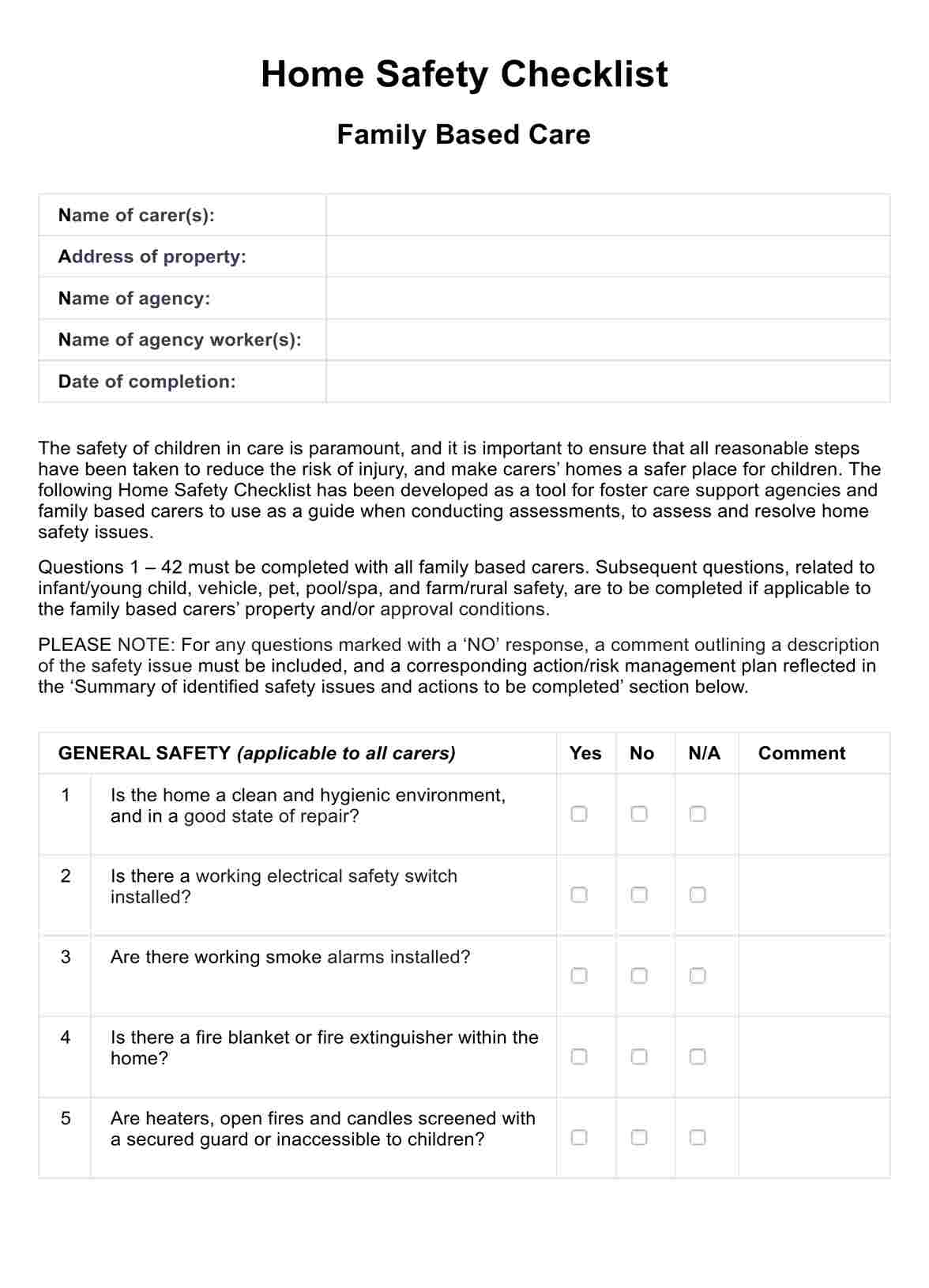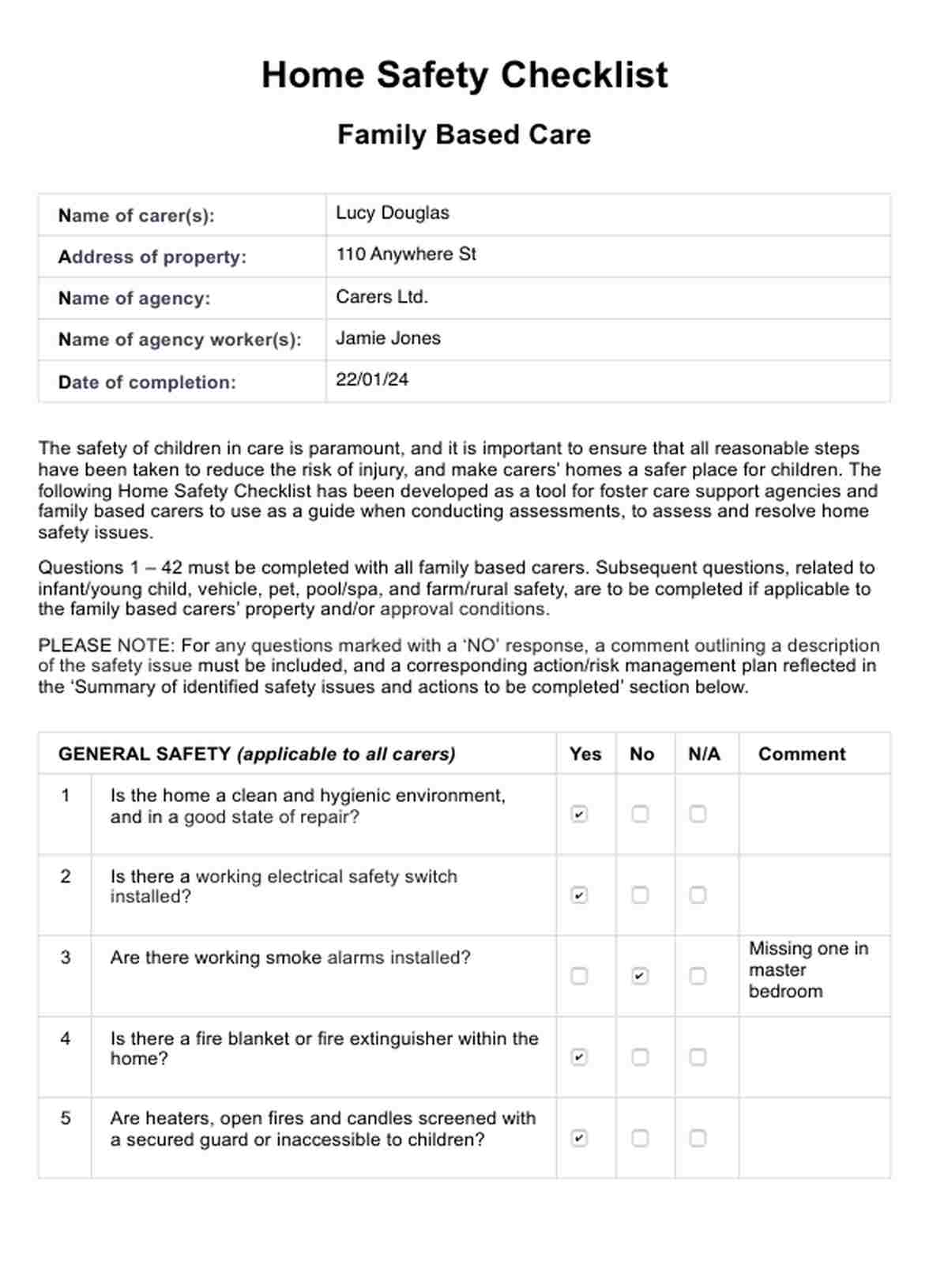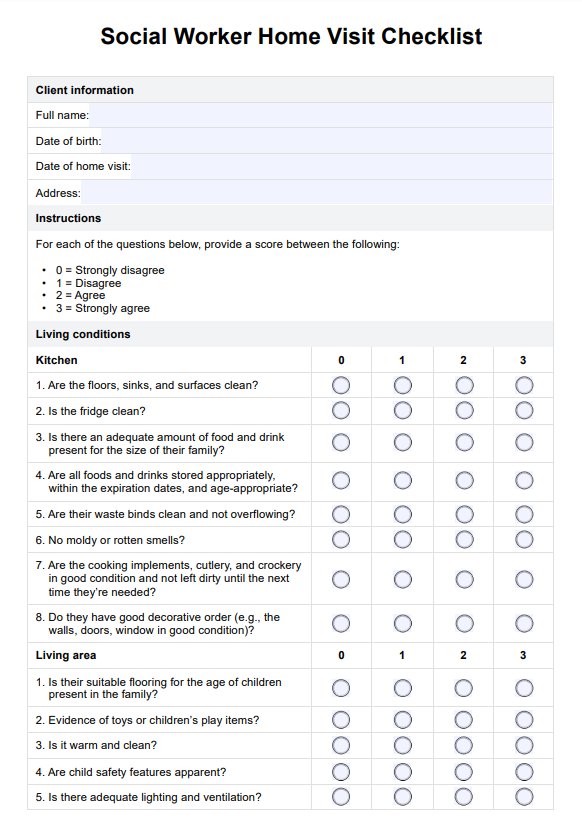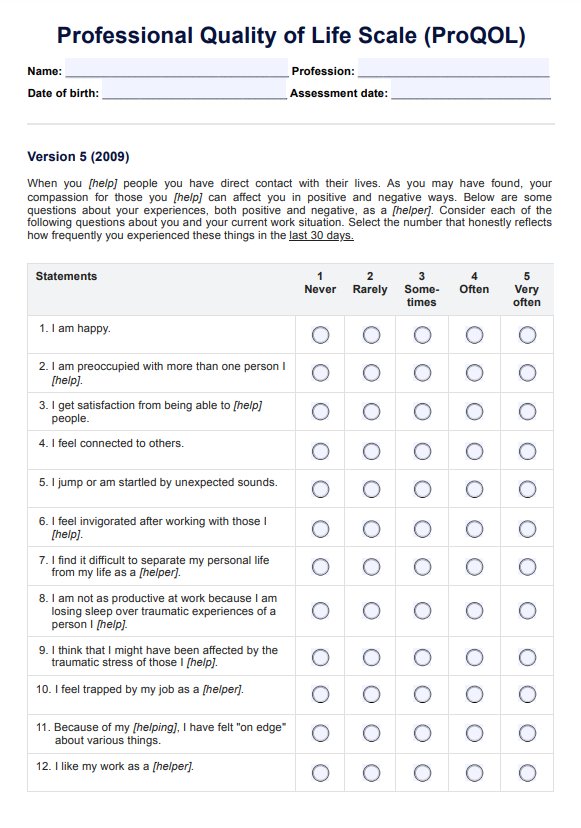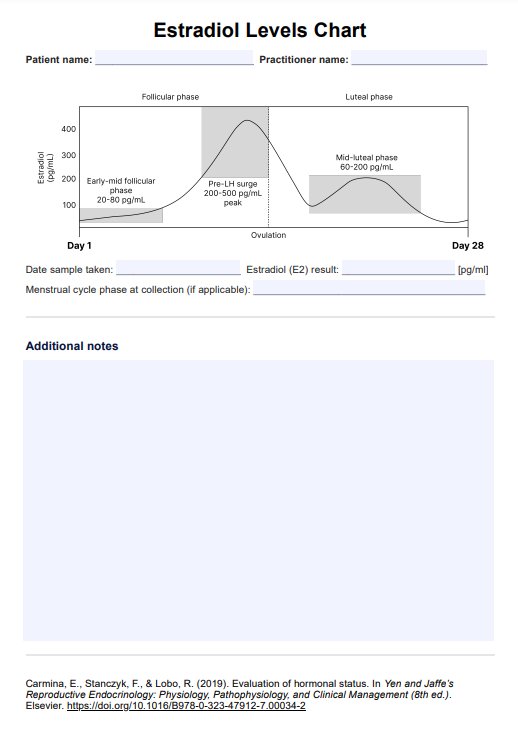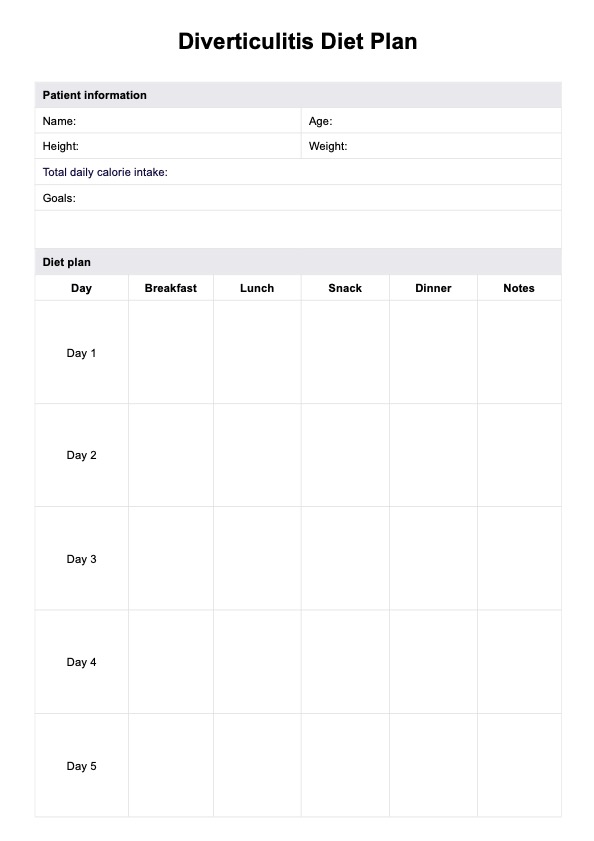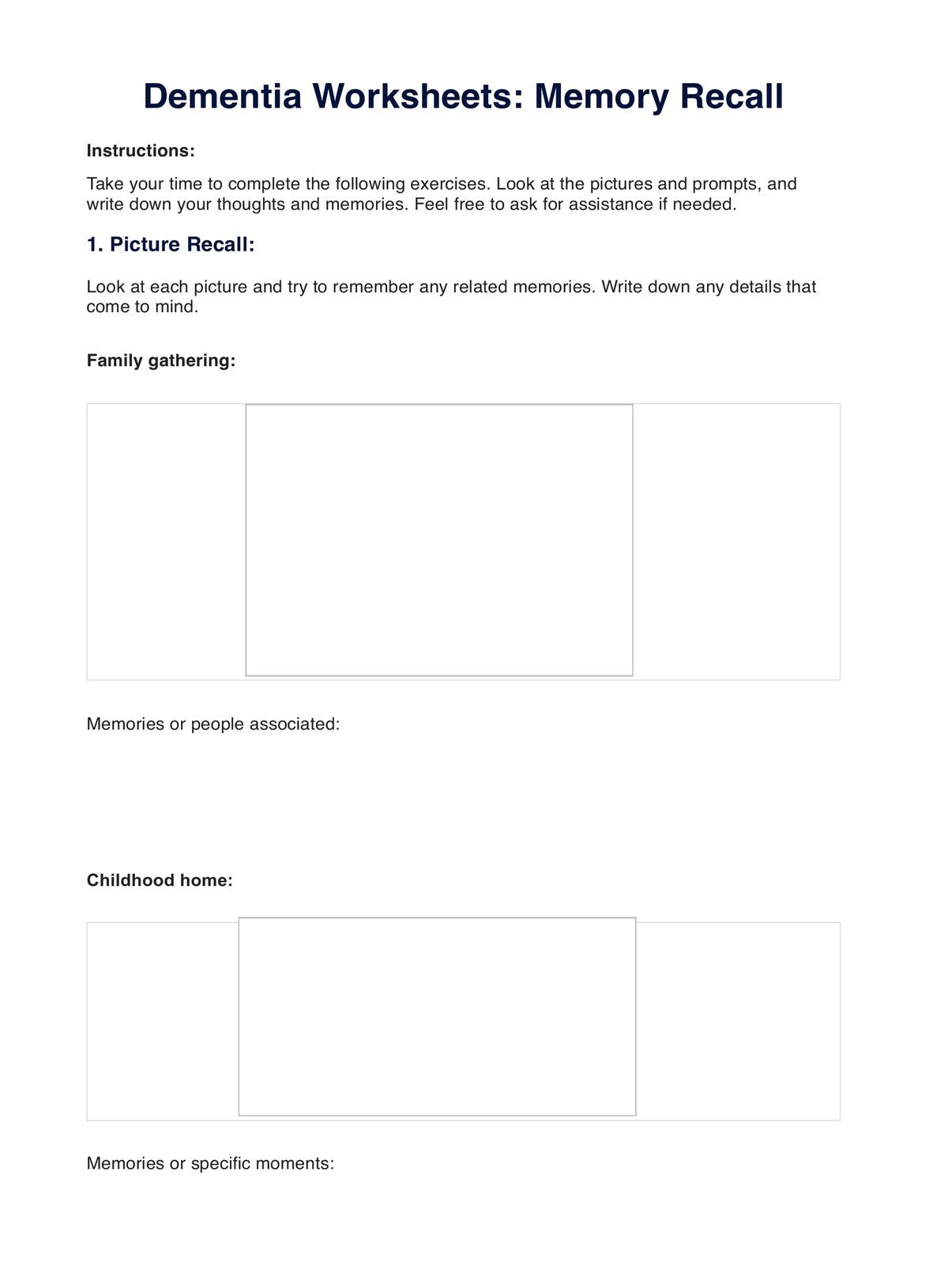CPS Home Visit Checklist
Our free CPS Home Visit Checklist promotes healthy child well-being and enhances safety. Read the complete guide now and download the template.


What is a CPS Home Visit Checklist?
A CPS Home Visit Checklist conducted by Child Protective Services (CPS) aims to assess the living conditions of the residents. This checklist evaluates the safety of homes and children's well-being to ensure they live in safe environments. A child’s surroundings are instrumental to their development, so incorporating this checklist is critical to facilitating appropriate living.
This CPS Home Visit Checklist covers multiple areas vital to child development, including hygiene, food and nutrition, safety hazards and concerns, as well as the psychological well-being of children. This is also in addition to their physical welfare.
Using the checklist, CPS workers can record all vital information for improved note-taking and observation processes, which also works towards making more informed decisions for better support. Agencies can create more standardized assessments for consistent quality checks and more easily identify symptoms or concerns of abuse and neglect.
Most importantly, the CPS Home Visit Checklist template is a robust framework for CPS agents to collaborate and voice concerns. The checklist can be utilized to promote greater transparency and ensure that the home environments are safe for children to flourish in.
The checklist is created upon the foundations of child welfare and health standards, allowing continual improvement. To make matters more convenient, our CPS Home Visit Checklist is also printable - which makes it a perfect option for traveling agents on the go.
CPS Home Visit Checklist Template
CPS Home Visit Checklist Example
How does it work?
To effectively use this printable CPS Home Visit Checklist Template, it is essential to follow the steps below for the best results.
Step 1: Download the checklist
Although this seems self-explanatory, the first step is to download the PDF. You can print it out and use it as a physical copy or simply edit the digital version on your preferred device. There is no right or wrong method to how you wish to record the information!
Step 2: Prepare for your visit
Preparing the checklist for your home visit is the first essential step beyond downloading. This means reviewing your documents and existing records to assess what parts of the checklist are most vital to attend to and what areas need adjusting.
Step 3: Observe
Once you enter the home, you must complete the checklist systematically to assess each area of interest. This includes cleanliness, safety, hazards, and necessities, amongst others.
Step 4: Mark the checklist
After and during your observations, you should check the appropriate boxes on the checklist to assess the conditions. Mark yes if they are in sufficient condition and no if they do not meet applicable standards. You are also encouraged to add comments for each assessment to elevate the reputability and credibility of your answer.
When would you use this template?
The CPS Home Visit Checklist Template can help children and minors feel safe and provided for within their home environments. These instances may encompass the following:
- Cases of abuse or neglect: In most reports of child abuse or misconduct in home environments, CPS agents are required to check out the homes to verify the claims. The checklist serves as a standardized framework for CPS workers to work through systematically to allow for consistent quality evaluations.
- Court mandates: In cases of disputes, custody battles, and other legal matters, a CPS home visit may be required. To determine if living environments are in the best interest of the child, it is common to see a CPS visit recommended. The checklist is a robust way to examine the home objectively to help the child and their care.
- Routine monitoring: If there are reports of mistreatment or families are deemed at-risk, CPS visits may be a regular occurrence. Continuous monitoring is a form of preventative care that ensures any problems are quickly identified and addressed to provide the highest form of support for the child.
- Follow-up visits: The CPS Home Visit Checklist can also be used in incidents in at-risk families, where the child has been removed from their home but may be re-entering. The checklist ensures that appropriate measures are being taken for reintegration.
- Callouts of concern: Community members, such as neighbors or teachers, may be concerned about the welfare of a child. In such cases, CPS agents may be called to intervene, where the checklist comes in. The checklist can support CPS workers in these instances, which also helps evaluate whether further steps are needed.
What do the results mean?
The results of a CPS Home Visit Checklist Template are instrumental in determining the following steps to secure children’s welfare. They are especially significant in establishing safety levels, which helps inform professionals about what interventions are needed to prioritize the child. Here are some common implications of what CPS home visit results mean:
- Safety levels: The results of this checklist can determine whether a home environment is safe for a child to live in and whether any hazards or risks threaten their welfare. By the end of this checklist, you should be able to determine whether there is a high, medium, or low risk for child safety.
- Concerns: The checklist is a valuable tool to identify any cause of concern, and upon completion, you should be able to summarize areas that may need improvement.
- Recommendations: The results of this checklist also mean that further action may be required for external service support. This could include parental classes, counseling, and more. Using the observations from the checklist, CPS agents can develop a plan to target areas of concern and assess whether any recommendations are needed.
- Immediate actions: In some cases, the results may mean immediate action is required. If the home is determined unfit for the child to live in, the child may need to be removed and placed in alternate care. Emergency care support may also be required.
- Follow-up plans: The checklist may highlight areas that require further monitoring or greater development of future visits and interventions.
Research & evidence
CPS home visit checklists have strong evidence-based support, making them an essential tool for CPS agents globally.
Extensive research outlines the essential role of checklists in child development, especially in assessing the appropriateness of their home environment. This aids in checking off critical milestones and promoting healthy growth. Not only this, but home visit checklists have proven efficacy when it comes to identifying risk factors such as substance abuse, maltreatment, mental health concerns, as well as domestic violence. Checklists provide a systematic approach to documenting and recording risk factors for higher-quality governance.
Utilizing these checklists also means CPS agents can reduce instances of child abuse and neglect to provide larger-scale support. Rather than subjective decisions being made, checklists allow for a standardized process that enables data-driven decision-making to boost reliability. Checklists can be considered a quality assurance measure that works towards objective assessments that prioritize the welfare of children.
In many cases, these checklists are also a legal requirement across various states and counties, as high systems and institutions regard them as standard compliance when it comes to child welfare and well-being.
Commonly asked questions
A CPS Home Visit Checklist is created by identifying critical assessment areas when evaluating child welfare. Simply categorize all elements with checkboxes and comment sections beside each to allow for precise documentation.
CPS Home Visit Checklists are used in abuse or neglect cases, court mandates, callouts, monitoring, and follow-up appointments. Essentially, any situation where child welfare at home must be examined.
The CPS Home Visit Checklist is commonly used by systematically assessing each section as the agent walks around the child’s home. Each component is checked to see whether it is sufficient, and comments are added. This provides evidence for potential risk management, recommendations, or immediate actions.
CPS agents, organizations, or social workers sometimes create CPS Home Visit Checklists. Fortunately, we have already made the CPS Home Visit Checklist—so all you have to do is download it!

.webp)
